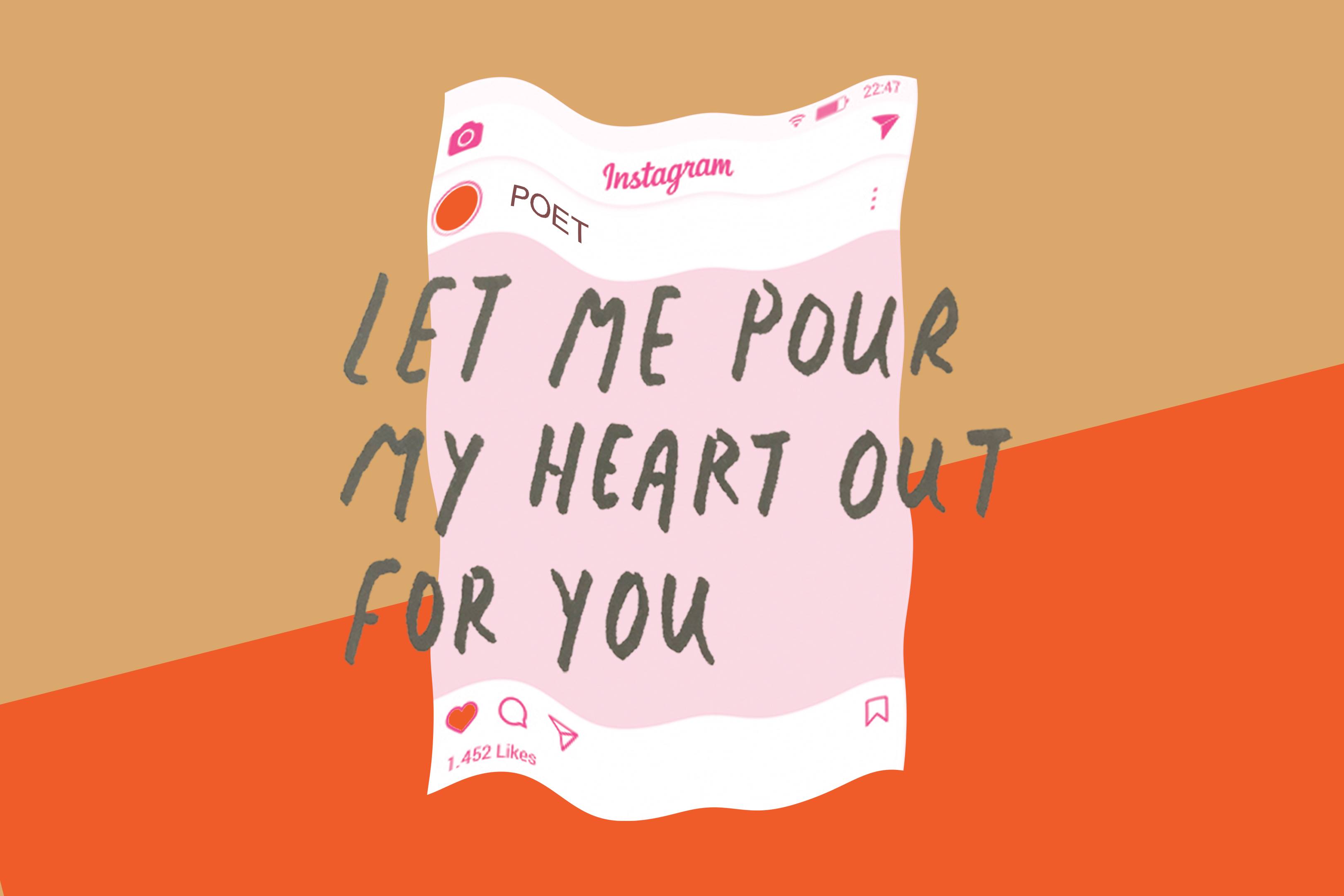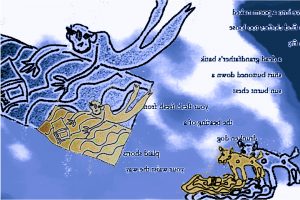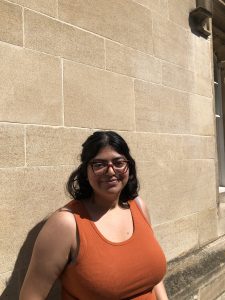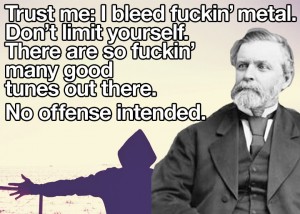
The Rise of the Insta-poet
by Imogen Wallersteiner | July 25, 2019
#sundayfunday #ad #brunch #poem… wait, #poem? Scrolling through Instagram, poetry may seem an unlikely hashtag among the daunting montage of idyllic beaches, oak-milk lattes, fashion influencers and envy-inducing sunsets. Yet within the world of Instagram – a world of instant visual and consumerist gratification – poetry has found a whole new sphere of publication.
In the last few years Instagram has fostered the growth of a number of popular poets – in particular, Rupi Kaur, r.m. drake, r.h.sin and the obscure ‘atticus poetry’. The buzzwords around these poems tend to be ‘immediacy’, ‘honesty’ and ‘spontaneity’ while the themes tend to be universal and generic, with words carefully selected to resonate with readers scrolling down their feed. The recurring tropes of sparse gnomic lines, confessional and emotive themes render the work amenable to opprobrium. Rebecca Watts, in a scathing article in the PN Review, has written that Insta-poetry has heralded an age of “short-form communication” with the result being that the “[t]he reader is dead”.
As with all literature, some of this work is good, some mediocre. The poetry of R. M. Drake finds its popularity by tapping into melodramatic themes of loneliness, relationships, loss and death. When interviewed, Drake described poetry as “not governed by any practical language laws. It is just free form.” His retro typeface and lower-case platitudes are repetitive, while his tone is a more comforting and tasteful version of Tracey Emin’s neon-lit artworks. These poems provide saccharine comfort in the same ways as horoscopes and endearing messages on Love Hearts-
Drake’s platitudinous lines (“you’re beautiful, baby. / don’t let your doubts / destroy who you are”) are accompanied by a caption promoting his $12 four book bundle available to pre-order, already “selling fast.” Such marketing combines the role of Insta-poet with the business savvy strategies of the lifestyle ‘influencer.’ Arguably, Drake’s success – his legion of 2 million Instagram followers, position on the New York Times Bestseller list and 14 published collections of poetry, prove that his strategy works.
Instagram is an interesting platform because it disrupts established publishing practices. Operating as a gateway into print publishing, a few especially successful Insta-poets have published their own collections similar to Drake. Poets gain popularity through their viral status, bypassing traditional ‘gatekeepers’ such as publishing houses. The Insta-poets have been compared to the ‘Beat Generation’ who also cultivated a ‘cult of personality’ around their work. The anonymous Canadian poet, Atticus, has taken this further than most, creating a brand around his absent self as much as his poetry, in part by hiding his face behind a physical mask, prompting The Times to describe him as ‘Byron for the Instagram generation.’ Atticus’s curated image, and the accompanying hashtag of #atticuspoetry, sells. He has also monetised his outputs by developing his own wine brand titled the ‘Lost Poet’, that he advertises with distinctive cliché as “wine for the thinkers, the daydreamers, the summer skinny dippers.”
While the carefully constructed personas of the Insta-poets may not be entirely new, these entrepreneurial millennials are disrupting a rooted, age-old practice through the digital culture and media of our age. These poems are often not traditionally, or especially artfully, crafted but there might be something artful about the form of Instagram itself. An explore page scattered with typeface poems and accompanying images recalls the collage artworks of the Cubists. Just as the modernist avant-garde responded to twentieth-century industrialisation and machine power, Instagram poetry reflects our own zeitgeist and is symptomatic of the fast-paced, ephemeral times we live in. Short and simple poetry is not innovative in itself but, by adding the element of the digital interface, Insta-poetry is arguably, in the words of Ezra Pound, ‘Making It New’. The composite, hybrid format of Instagram requires us to read text alongside art, transforming our traditional experience of reading poetry on the physical page as we are hit with a visual bricolage of popular culture and mainstream tastes.
These poems certainly are instant, ephemeral and sometimes lazy constructions of phrase that can easily be derided as “consumer-driven content”. Yet, as I wait for a bus on a cold night and read a short-form quote or a line of one of Rupi Kaur’s poems I find myself strangely comforted. This haiku-esque work by her exemplifies the typical Insta-poem: ‘fall/ in love/ with your solitude’. Kaur is a millennial sensation online with 3.6 million acolytes on Instagram and two published works behind her. At the bus stop, her work is a welcome respite from my otherwise polluted explore page comprising mainly bikini-clad girls and gym honed bodies – frustrating content which my ‘personalised’ Instagram algorithm assumes I’m desperate to see. Short-form work is easily consumable and sometimes that is what we need in our tense and rushed lives, like a cup of tea or a warm hug. Essential to the appeal of the of the Insta-poem is accessibility and many of the works can be read as little more than pithy motivational aphorisms. The poems tap into the internet’s appetite for the Instant through their minimal language and brevity of form.
It could even be postulated that such poems hold therapeutic value and may best be read through the lens of ‘bibliotherapy’. Bibliotherapy is an emerging field in the world of literary studies that examines the healing effects of words and texts on the reader. Recently, Instagram has come under scrutiny for its dark side. Pages have been revealed that contain harmful, unfiltered content teaching self-harm techniques, exposing vulnerable people to dangerous ideas. Molly Russell’s tragic suicide in 2017 prompted the UK government to pile pressure onto Instagram to shield its users from pages containing harmful, unfiltered content. These posts can teach self-harm techniques and expose vulnerable people to dangerous ideas. Instagram, and social media in general, is often a space people turn to in times of sadness and isolation. Instead of providing comfort and fulfilment it can often leave its users more alone than ever. Poems, by contrast, offer an escape from the usual bombardment of negative, anxiety inducing images. Reaching for a physical book of poetry may be a more culturally prestigious solution than turning to Instagram but the healing power of words can come through a myriad of forms.
These poems tackle difficult themes that are pertinent to our times, such as womanhood, violence, race and abuse. In particular, Kaur’s poems tap into her own multicultural background as a Punjabi Sikh who moved to Canada at the age of four. She describes the absence of uppercase letters in her poems as a homage to Gurmukhi script. For Kaur, the challenges of womanhood and ethnicity have been “layers and layers of oppression” and as an immigrant she describes herself as “struck between two worlds, never fully belonging to one” (2015). She has also explored menstrual blood – a long-held societal taboo – posting a picture of herself in bed with a small amount of blood on her pyjamas.
Similar to Kaur, Warsan Shire’s poems explore the exilic condition. She is a Somali poet based in London, and in 2014 was named the first ever Young Poet Laureate of London. According to Alexis Okeowo in the New Yorker, Shire’s impressive work “embodies the kind of shape-shifting, culture-juggling spirit lurking in most people who can’t trace their ancestors back to their country’s founding fathers.” Shire’s poems explore the trauma of displacement alongside gender, war and sex. It is striking how the short-form writing fostered by social media has attracted voices from migrant and minority communities. It might be argued that alongside the rawness and immediacy of the Insta-form, the democratic sounding board of Instagram gives minority writers access to a public platform traditionally restricted by establishment gatekeepers.
Although Shire is often lazily lumped together with the Insta-poets, she prefers the medium of twitter and bears little stylistic resemblance with the likes of Atticus and Drake. The term ‘Insta-poetry’ itself is complicated, and perhaps too elastic and wide-ranging. Kaur views this confusion as stemming from the novelty of social media: when interviewed she stated “I think the issue is because we have a form of art that is highly, highly traditional – meaning poetry – and then you have this other thing which is new and quite non-traditional, which is of course social media. And so the gatekeepers of these two things are kind of confused at the moment.”
The hyper-connected culture of the internet allows for Insta-poetry to tap into the emotions and ‘Explore’ pages of a wide-ranging, global readership. Rebecca Watts’ aforementioned article for the PN Review criticises the ability of Insta-poets “to draw a crowd, attract an audience or assemble a mob,” arguing that it does not “itself render a thing intrinsically good: witness Donald Trump.” Comparing the US president’s cult of personality to the followings garnered by Insta-poets seems harsh. However, Watts is correct that both Insta-poets and the US president have mastered the dynamic and influential form of the social media post. The rise of the amateur digital poet is transforming the world of literature as Insta-poets harness social media to unsettle poetry’s very traditional and predominantly white, male community. Their poetry has the potential to be innovative and to resonate with our times. Be they meritorious or not, these Insta-poets are significant cultural products of our modern digital age. ∎
Words by Imogen Wallersteiner. Artwork by Ellen Sharman.




